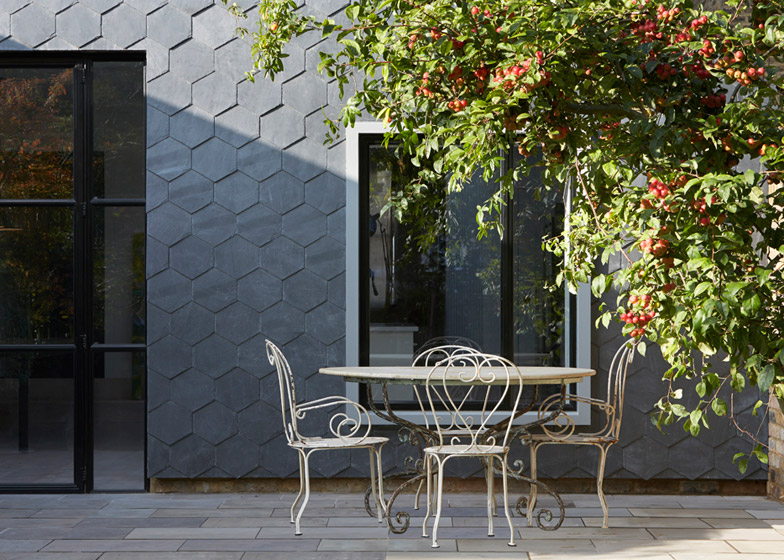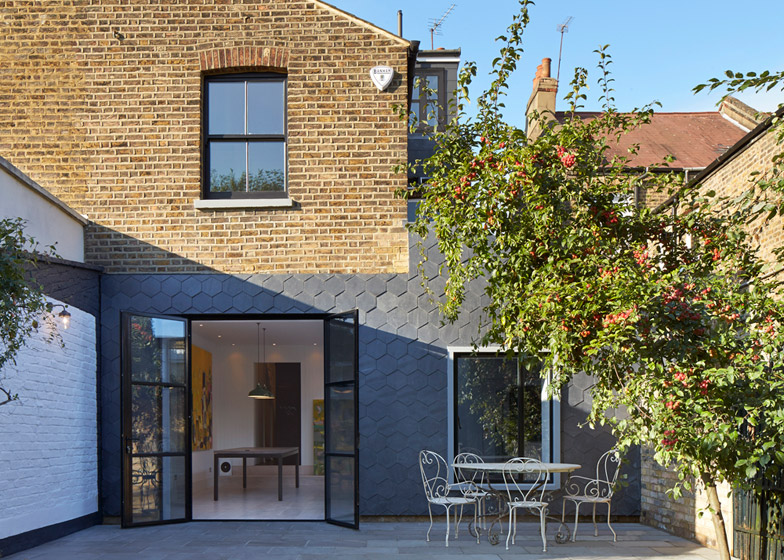Hexagonal slate tiles cover this extension to a west London home designed by architects Christian Ducker and Tyeth Gundry to create a bright and spacious new kitchen (+ slideshow).
London-based Gundry & Ducker extended the rear of the Victorian property in Kensal Rise, replacing a dark and narrow kitchen and bathroom with a large cooking and dining space that opens out to the garden.
"In the existing arrangement of this house, the kitchen was based in a low, narrow space at the rear," said the architect duo, whose previous projects include a blackened larch-clad extension in south London.
"Our brief was to focus on this area, and to form a large, dramatic, light and open kitchen, living and entertaining space that worked all year round as the heart of the home."
An extra strip of land along the side of the house allowed the designers to create a larger area than the typical London house extension, although the clients were still keen to retain "a comfortable domestic feeling".
To achieve this, the architects selected a palette of simple but traditional materials that they felt could be used in a contemporary way, including slate tiles and timber tongue-and-groove panelling.
The hexagonal tiles clad the garden-facing facade, flanking a patio that allows residents to dine outdoors.
Inside, the wooden panels cover some of the walls and a sloping section of the ceiling. Some form chevron patterns, while others create stripes that conceal doors and cupboards.
A "secret entrance" to a larder is also concealed within the lines of the panelling.
A skylight follows the orientation of the kitchen worktops, highlighting a sightline between a picture window and a doorway leading through to the rest of the house.
"A window seat with a view of a tree forms a visual focus to the end of the kitchen area and provides a pleasant place to sit, whilst the dining area opens out into the garden via a pair of french doors," added Gundry and Ducker.
Dark ceramic tiles frame the oven and fridge-freezer, and the cut-crystal light bulbs by London designer Lee Broom form one of three types of light fixture introduced.
The room sits two steps lower than the floor level of the rest of the storey, creating an informal seating perch along the end wall.
Photography is by Hufton + Crow.
Project credits:
Architects: Gundry & Ducker
Structural Engineer: Toynbee Associates







